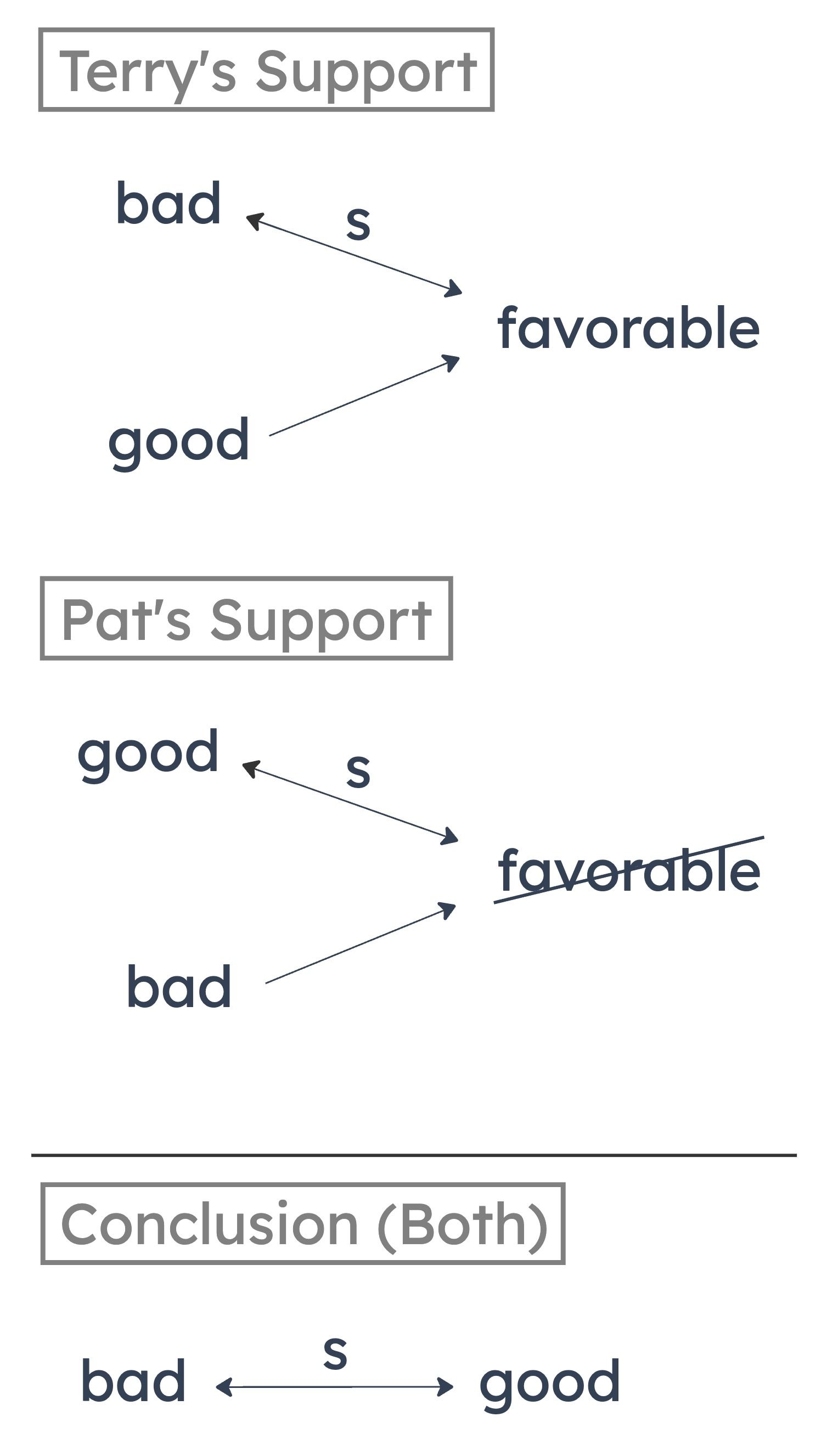LSAT 109 – Section 4 – Question 21
LSAT 109 - Section 4 - Question 21
December 2000You need a full course to see this video. Enroll now and get started in less than a minute.
Target time: 2:14
This is question data from the 7Sage LSAT Scorer. You can score your LSATs, track your results, and analyze your performance with pretty charts and vital statistics - all with a Free Account ← sign up in less than 10 seconds
| Question QuickView |
Type | Tags | Answer Choices |
Curve | Question Difficulty |
Psg/Game/S Difficulty |
Explanation |
|---|---|---|---|---|---|---|---|
| PT109 S4 Q21 |
+LR
+Exp
| Flaw or descriptive weakening +Flaw Conditional Reasoning +CondR Quantifier +Quant | A
2%
161
B
4%
158
C
5%
159
D
81%
167
E
8%
163
|
143 153 162 |
+Harder | 150.49 +SubsectionHarder |
Pat: I agree with your conclusion, but not with the reasons you give for it. Some good actions actually do not have favorable consequences. But no actions considered to be bad by our society have favorable consequences, so your conclusion, that some actions our society considers bad are actually good, still holds.
Terry says that some actions considered to be bad by our society are actually good. As premises, he gives two conditional claims, shown in the diagram below. Pat arrives at the same conclusion, that some actions considered to be bad by our society are actually good, but he arrives at this conclusion by citing two different conditional claims, shown in the diagram below.


Identify and Describe Flaw
Both speakers commit the cookie-cutter “confusing sufficiency and necessity” flaw. Terry mistakenly argues that since some bad actions and all good actions share the necessary condition of favorable consequences, some actions considered bad are actually good. Alternatively, Pat mistakenly argues that because some good actions and all bad actions share the necessary condition of not having good consequences, some actions considered bad are actually good.
A
presupposing that if a certain property distinguishes one type of action from another type of action, then that property is one of many properties distinguishing the two types of action
Neither Terry nor Pat makes assumptions about the number of properties distinguishing actions. They only argue that some actions considered bad by our society are actually good.
B
presupposing that if most actions of a certain type share a certain property, then all actions of that type share that property
This is a cookie-cutter flaw of confusing “most” for “all.” Neither Terry nor Pat discusses “most” actions of any type.
C
presupposing that if a certain property is shared by actions of a certain type in a given society, then that property is shared by actions of that type in every society
Neither Terry nor Pat discusses “every” society. Both Terry and Pat only argue that some actions considered to be bad by our society are actually good.
D
presupposing that if an action’s having a certain property is necessary for its being a certain type of action, then having that property is sufficient for being that type of action
This is the cookie-cutter “confusing sufficiency and necessity” flaw committed by both Terry and Pat. They both draw unfounded conclusions about two sufficient conditions because those sufficient conditions share a necessary condition.
E
presupposing that if a certain property is shared by two types of action, then that property is the only property distinguishing the two types of action from actions of other types
Neither Terry’s argument nor Pat’s argument addresses the number of properties distinguishing any actions. Both Terry and Pat just argue that some actions considered to be bad by our society are actually good.
Take PrepTest
Review Results
LSAT PrepTest 109 Explanations
Section 1 - Logical Reasoning
- Question 01
- Question 02
- Question 03
- Question 04
- Question 05
- Question 06
- Question 07
- Question 08
- Question 09
- Question 10
- Question 11
- Question 12
- Question 13
- Question 14
- Question 15
- Question 16
- Question 17
- Question 18
- Question 19
- Question 20
- Question 21
- Question 22
- Question 23
- Question 24
- Question 25
Section 2 - Reading Comprehension
- Passage 1 – Passage
- Passage 1 – Questions
- Passage 2 – Passage
- Passage 2 – Questions
- Passage 3 – Passage
- Passage 3 – Questions
- Passage 4 – Passage
- Passage 4 – Questions
Section 3 - Logical Reasoning
- Question 01
- Question 02
- Question 03
- Question 04
- Question 05
- Question 06
- Question 07
- Question 08
- Question 09
- Question 10
- Question 11
- Question 12
- Question 13
- Question 14
- Question 15
- Question 16
- Question 17
- Question 18
- Question 19
- Question 20
- Question 21
- Question 22
- Question 23
- Question 24
- Question 25
Section 4 - Logical Reasoning
- Question 01
- Question 02
- Question 03
- Question 04
- Question 05
- Question 06
- Question 07
- Question 08
- Question 09
- Question 10
- Question 11
- Question 12
- Question 13
- Question 14
- Question 15
- Question 16
- Question 17
- Question 18
- Question 19
- Question 20
- Question 21
- Question 22
- Question 23
- Question 24
- Question 25
- Question 26
Leave a Reply
You must be logged in to post a comment. You can get a free account here.